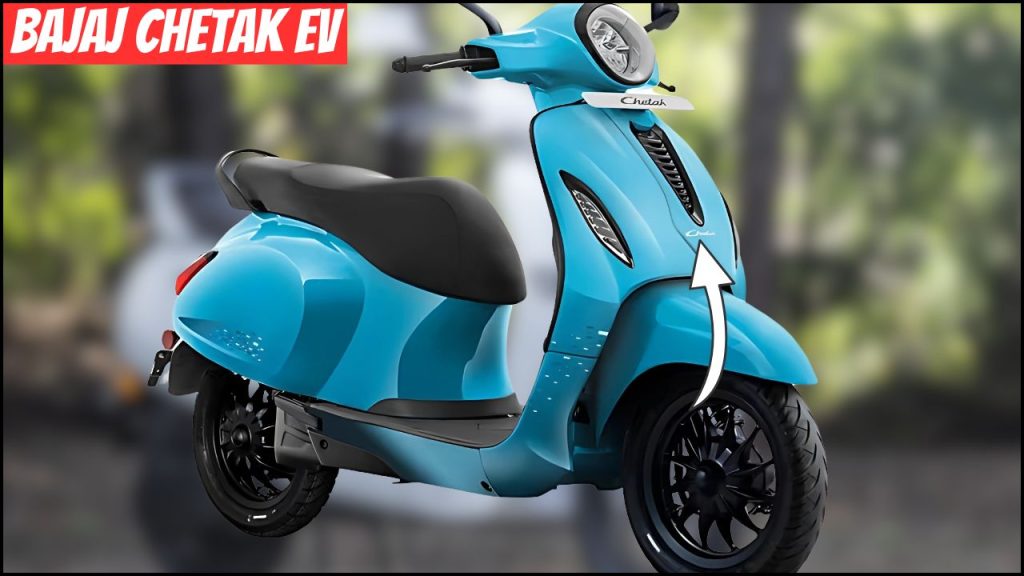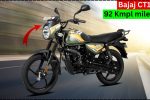
The Bajaj Chetak EV represents much more than just another entry in India’s growing electric vehicle marketplace—it marks the resurrection of one of the country’s most beloved and culturally significant two-wheeler nameplates. The original Chetak scooter, produced from 1972 to 2006, became a household name that transported generations of Indian families, earning the affectionate nickname “Hamara Bajaj” (Our Bajaj) through iconic marketing campaigns. When Bajaj decided to re-enter the scooter segment after a strategic absence, it chose to do so not with conventional technology but by embracing the future through electrification.
The new Bajaj Chetak EV comes in a dhansu look that captivates at first glance, blending nostalgic design elements with forward-thinking technology and performance capabilities that position it at the forefront of India’s electric revolution.
Heritage Reimagined: Neo-Retro Design Philosophy
The Chetak EV’s design represents a masterclass in balancing retro inspiration with contemporary execution. While modern, the scooter incorporates subtle nods to its predecessor, creating what Bajaj calls “neo-retro” styling. The overall silhouette features curved, flowing lines reminiscent of the original Chetak but executed with modern precision and materials. The front apron incorporates a distinctive horseshoe-shaped LED headlamp—a modern interpretation of the iconic original’s front end.
Unlike many electric scooters that emphasize their technological nature through futuristic styling, the Chetak EV embraces elegant restraint. Body panels are seamlessly integrated, hiding technical components and creating a clean, uncluttered appearance. The absence of exposed wires, bolts, or battery compartments contributes to a premium aesthetic that differentiates the Chetak from more utilitarian electric offerings.
Available in six carefully curated colors, including Indigo Metallic, Hazelnut, and Brooklyn Black, the color palette combines heritage-inspired tones with contemporary finishes. The paint quality and metal-bodied construction elevate the Chetak above plastic-bodied competitors, reinforcing its premium positioning.
Powerful Performance: Electric Heart With Urban Soul
At the heart of the Chetak EV is an electric powertrain built around a 3.8kW electric motor that produces approximately 16Nm of torque. This motor is powered by a non-removable IP67-rated lithium-ion battery pack with a capacity of around 3 kWh, positioned under the seat to maintain a low center of gravity. The Chetak offers two riding modes: Eco and Sport. In Eco mode, the scooter prioritizes range over performance, limiting top speed to around 60 km/h while maximizing battery efficiency. Sport mode unlocks the full performance potential, allowing a top speed of approximately 70 km/h and more responsive acceleration, but at the cost of reduced range.
The claimed range varies between 90-95 km on a full charge depending on the riding mode, usage patterns, and conditions. Real-world range typically falls between 75-85 km, which adequately serves the average daily urban commute of 30-40 km with comfortable margin. The scooter’s regenerative braking system helps recover some energy during deceleration, contributing marginally to extended range. Charging is accomplished through a standard 5A household socket, with a full charge taking approximately 4-5 hours.
Superior Ride Experience: Comfort Meets Control
The Chetak EV offers a refined riding experience that complements its premium positioning. The scooter’s structural rigidity, balanced weight distribution, and thoughtfully tuned suspension contribute to a stable, planted feel on the road. The suspension setup consists of a single-sided front fork and rear monoshock, both calibrated to prioritize comfort over sportiness. This configuration handles urban road irregularities with composure, absorbing bumps without transmitting excessive harshness to the rider. The relatively long wheelbase enhances straight-line stability, while the 12-inch wheels (larger than many competitors) provide better pothole absorption and overall stability.
With a kerb weight of approximately 120 kg, the Chetak is heavier than many conventional scooters but about average for electric scooters with similar battery capacity. This weight is well-disguised during normal riding but can be felt during low-speed maneuvers and while parking. The low-mounted battery helps keep the center of gravity low, enhancing stability and handling.
Smart Technology: Connected Urban Mobility
The Chetak EV incorporates technology that enhances both the riding experience and ownership convenience. The centerpiece is a full-digital instrument console that displays essential information, including speed, battery status, range estimation, and riding mode. Connectivity features come through the Chetak mobile application, which allows riders to access functions like ride statistics and history, battery status and charging information, service reminders and booking, location sharing and vehicle locator, and trip analysis, including efficiency metrics. The scooter incorporates numerous “smart” features such as a proximity-based key fob that enables keyless start, automatic locking/unlocking, and a feature that remembers the last riding mode selected.
Integrated into the scooter is a “reverse assist” function that helps with backward parking maneuvers, particularly valuable given the vehicle’s weight. The lighting system is fully LED, contributing to both energy efficiency and modern aesthetics. The horseshoe-shaped headlamp provides adequate illumination for urban nighttime riding, while the distinctive LED daytime running light enhances visibility to other road users.
Ownership Benefits: Economic and Environmental Advantages
The ownership proposition of the Chetak EV extends beyond the riding experience to encompass the overall relationship with the vehicle. Bajaj has implemented a direct-to-customer sales model through dedicated Chetak showrooms in select cities, offering a premium retail experience that differs from traditional dealerships. Maintenance requirements are significantly reduced compared to internal combustion scooters, with no oil changes, filter replacements, or tune-ups needed. The regenerative braking system reduces wear on brake components, further lowering maintenance costs. Bajaj offers a comprehensive warranty package including three years/50,000 km on the scooter and three years/40,000 km on the battery, providing peace of mind regarding the relatively new technology.
The running cost advantage is substantial, with per-kilometer costs approximately one-fourth to one-fifth that of petrol scooters, depending on local electricity and fuel rates. For a typical urban commuter covering 1,000 km monthly, this can translate to significant savings over the ownership period, offsetting some of the higher initial purchase price.
Final Analyzes
The Bajaj Chetak EV comes in a dhansu look that represents a thoughtful blend of nostalgia and innovation, successfully translating the essence of an iconic nameplate into a product relevant for contemporary mobility needs. Its elegant design, refined performance, and premium positioning have helped establish electric scooters as desirable products rather than merely economical alternatives. While challenges remain regarding charging infrastructure, initial cost, and range limitations, the Chetak demonstrates that electric mobility can offer an enhanced experience rather than a compromised one. As battery technology improves and infrastructure develops, products like the Chetak may well become the new normal rather than choices.
By leveraging its heritage while embracing the future, Bajaj has created more than just another electric scooter—it has reimagined an icon for a new generation while staying true to the values that made the original Chetak a cultural phenomenon. In doing so, it has created a compelling case for electric mobility that appeals to both emotion and reason, a rare achievement in a segment often dominated by purely rational considerations.

Katherine Johnson is a passionate writer with a keen interest in storytelling, content creation, and creative expression. She enjoys exploring diverse topics and crafting engaging narratives that captivate readers.



